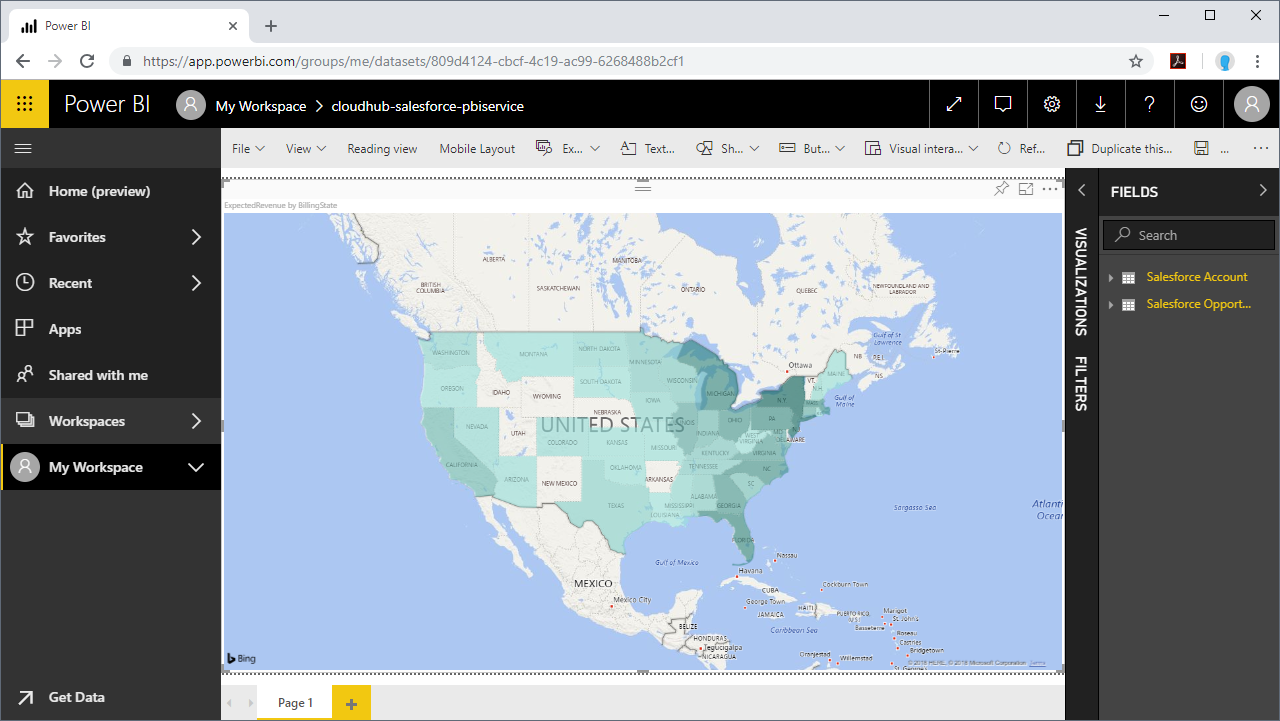Discover how a bimodal integration strategy can address the major data management challenges facing your organization today.
Get the Report →Visualize Live SAP Ariba Source Data in the Power BI Service
Use CData Connect Server to create a virtual SQL Server database for SAP Ariba Source data and create custom reports in the Power BI Service.
Power BI transforms your company's data into rich visuals for you to collect and organize so you can focus on what matters to you. When paired with CData Connect Server, you get instant access to SAP Ariba Source data for visualizations, dashboards, and more. This article shows how to build and publish a dataset from SAP Ariba Source data in Power BI and then create reports on SAP Ariba Source data in the Power BI service.
CData Connect Server provides a pure SQL interface for SAP Ariba Source, allowing you to easily build reports from live SAP Ariba Source data in Power BI — with no need to replicate the data. As you build visualizations, Power BI generates SQL queries to gather data. Using optimized data processing out of the box, CData Connect Server pushes all supported SQL operations (filters, JOINs, etc) directly to SAP Ariba Source, leveraging server-side processing to quickly return SAP Ariba Source data.
NOTE: You can also import SAP Ariba Source data into Power BI through Connect Server (instead of using the on-premise gateway). Read how in the related Knowledge Base article.
Create a Virtual SQL Database for SAP Ariba Source Data
CData Connect Server uses a straightforward, point-and-click interface to connect to data sources and generate APIs.
- Login to Connect Server and click Connections.
![Adding a connection]()
- Select "SAP Ariba Source" from Available Data Sources.
-
Enter the necessary authentication properties to connect to SAP Ariba Source.
In order to connect with SAP Ariba Source, set the following:
- API: Specify which API you would like the provider to retrieve SAP Ariba data from. Select the Supplier, Sourcing Project Management, or Contract API based on your business role (possible values are SupplierDataAPIWithPaginationV4, SourcingProjectManagementAPIV2, or ContractAPIV1).
- DataCenter: The data center where your account's data is hosted.
- Realm: The name of the site you want to access.
- Environment: Indicate whether you are connecting to a test or production environment (possible values are TEST or PRODUCTION).
If you are connecting to the Supplier Data API or the Contract API, additionally set the following:
- User: Id of the user on whose behalf API calls are invoked.
- PasswordAdapter: The password associated with the authenticating User.
If you're connecting to the Supplier API, set ProjectId to the Id of the sourcing project you want to retrieve data from.
Authenticating with OAuth
After setting connection properties, you need to configure OAuth connectivity to authenticate.
- Set AuthScheme to OAuthClient.
- Register an application with the service to obtain the APIKey, OAuthClientId and OAuthClientSecret.
For more information on creating an OAuth application, refer to the Help documentation.
Automatic OAuth
After setting the following, you are ready to connect:
-
APIKey: The Application key in your app settings.
OAuthClientId: The OAuth Client Id in your app settings.
OAuthClientSecret: The OAuth Secret in your app settings.
When you connect, the provider automatically completes the OAuth process:
- The provider obtains an access token from SAP Ariba and uses it to request data.
- The provider refreshes the access token automatically when it expires.
- The OAuth values are saved in memory relative to the location specified in OAuthSettingsLocation.
![Configuring a connection (SQL Server is shown).]()
- Click Save Changes
- Click Privileges -> Add and add the new user (or an existing user) with the appropriate permissions.
Connecting to Connect Server from Power BI
To connect to and visualize live SAP Ariba Source data in the Power BI service), install the on-premises data gateway, add a data source to the gateway from the Power BI service, and publish a dataset from Power BI Desktop to the service.
Install the On-Premises Data Gateway
The Microsoft on-premises data gateway provides secure data transfer between connected data sources and various cloud-based Microsoft tools and platforms. You can read more about the gateway in the Microsoft documentation.
You can download and install the gateway from the Power BI service:
- Log in to PowerBI.com.
- Click the Download menu and click Data Gateway.
![Download the Data Gateway]()
- Follow the instructions for installation, making note of the name of the gateway.
Add SAP Ariba Source as a Data Source to the Power BI Service
Once you have installed the data gateway, you add Connect Server as a data source to the Power BI service:
- Log in to PowerBI.com.
- Click the Settings menu and click "Manage gateways."
![Settings -> Manage gateways]()
- Click "ADD DATA SOURCE" and configure the connection to Connect Server:
- Set Data Source Name Connect_SAPAribaSource.
- Choose SQL Server as the Data Source Type.
- Set Server to the address of your Connect Server instance (i.e.: connect_server_url).
- Set Database to the name of your virtual SAP Ariba Source database (i.e.: SAPAribaSource1).
- Set Authentication Method to Basic.
- Set Username and Password to Connect Server credentials.
Publish a Dataset from Power BI Desktop
With the gateway installed and Connect Server added as a datasource to the Power BI service, you can publish a dataset from Power BI Desktop to the service.
- Open Power BI, click Get Data -> More, then select SQL Server database, and click Connect.
- Set the connection properties and click OK.
- Set Server to the address of your Connect Server instance (i.e.: connect_server_url).
- Set Database to the name of your virtual SAP Ariba Source database (i.e.: SAPAribaSource1).
- Set Data Connectivity mode to DirectQuery*.
![Connect to CData Connect Server instance]() * DirectQuery enables live query processing and real-time visualizations of SAP Ariba Source data.
* DirectQuery enables live query processing and real-time visualizations of SAP Ariba Source data.
- In the authentication wizard, select Database, set the User name and Password properties, and click Connect.
- Select the table(s) to visualize in the Navigator dialog.
In the Query Editor, you can customize your dataset by filtering, sorting, and summarizing SAP Ariba Source columns. Click Edit to open the query editor. Right-click a row to filter the rows. Right-click a column header to perform actions like the following:
- Change column data types
- Remove a column
- Group by columns
Power BI detects each column's data type from the SAP Ariba Source metadata reported by Connect Server.
Power BI records your modifications to the query in the Applied Steps section, adjusting the underlying data retrieval query that is executed to the remote SAP Ariba Source data. When you click Close and Apply, Power BI executes the data retrieval query.
Otherwise, click Load to pull the data into Power BI.
- Define any relationships between the selected entities on the Relationships tab.
- Click Publish (from the Home menu) and select a Workspace.
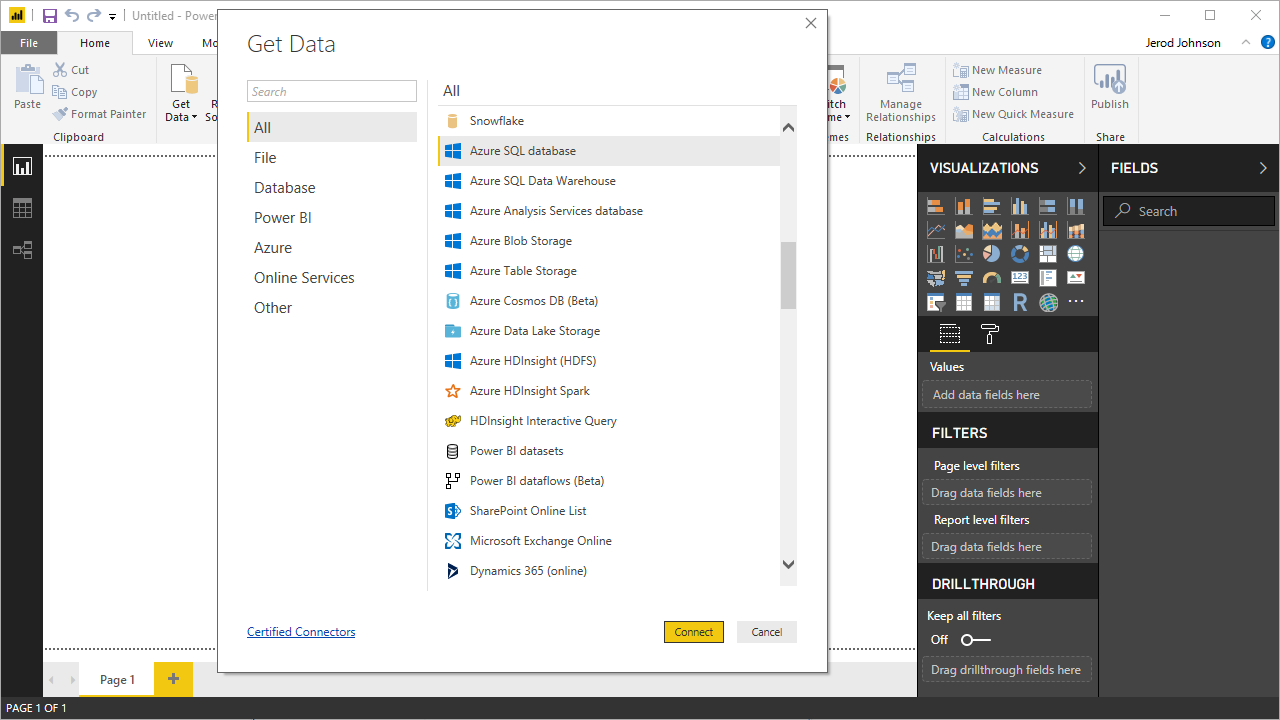
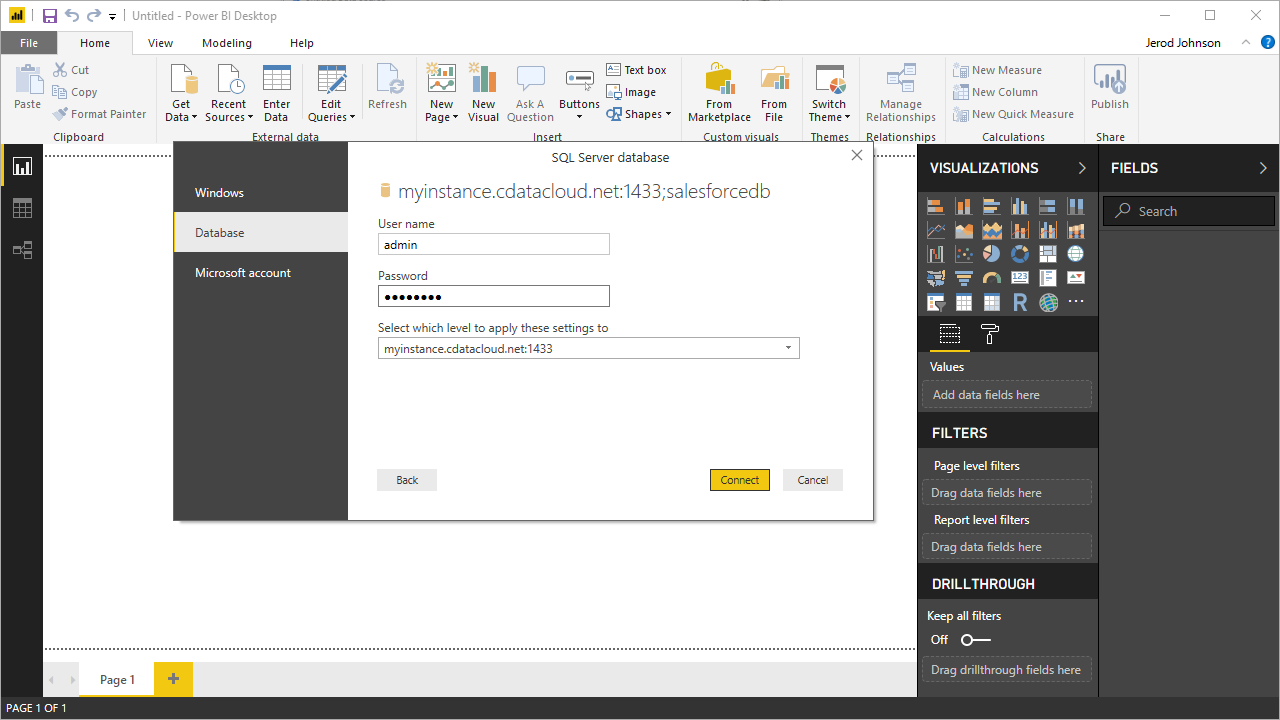
Build Reports and Dashboards on SAP Ariba Source Data in the Power BI Service
Now that you have published a dataset to the Power BI service, you can create new reports and dashboards based on the published data:
- Log in to PowerBI.com.
- Click Workspaces and select a workspace.
- Click Create and select Report.
- Select the published dataset for the report.
![Select a dataset]()
- Choose fields and visualizations to add to your report.
![Visualizing SAP Ariba Source data in the Power BI service]()
SQL Access to SAP Ariba Source Data from Cloud Applications
Now you have a direct connection to live SAP Ariba Source data from the Power BI service. You can create more data sources and new visualizations, build reports, and more — all without replicating SAP Ariba Source data.
To get SQL data access to 200+ SaaS, Big Data, and NoSQL sources directly from your cloud applications, see the CData Connect Server.








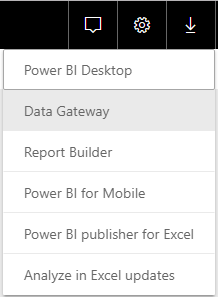
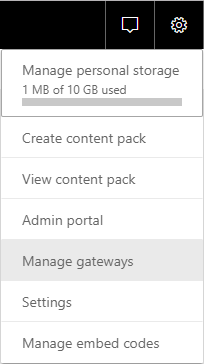
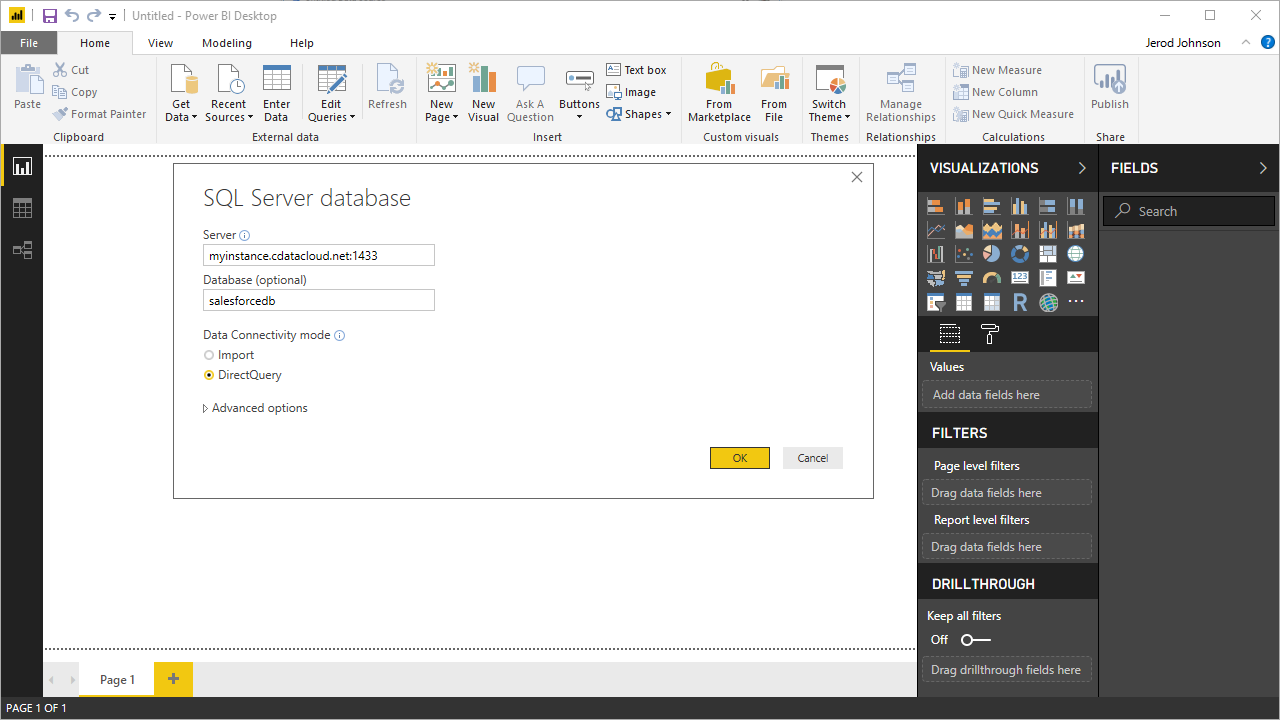 * DirectQuery enables live query processing and real-time visualizations of SAP Ariba Source data.
* DirectQuery enables live query processing and real-time visualizations of SAP Ariba Source data.

